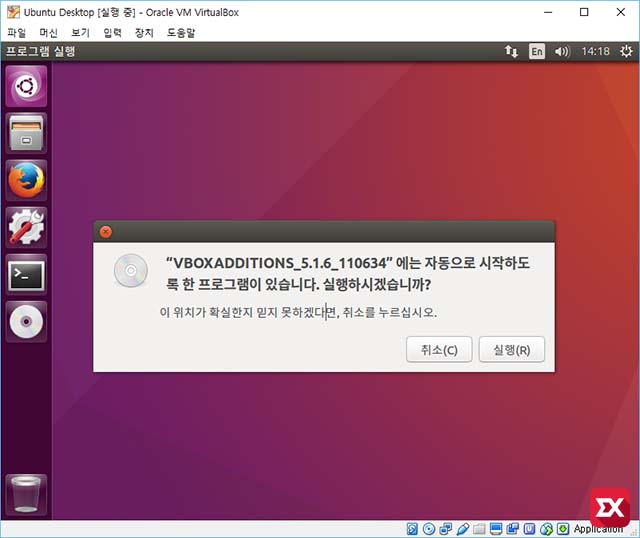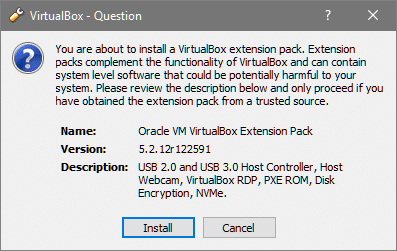


add support to remote VirtualBox hosts, but I simply did not have enough bandwidth to embark on such an adventure, and becoming accustomed to the virsh libraries would have taken a significant amount of time. My first instinct was to solve the core issue, i.e. you cannot connect to a remote VirtualBox host, or in other words MAAS and VirtualBox must run in the same OS environment.Ĭonnections to local and remote VirtualBox hosts you can use MAAS to power up, power check and power down your physical and virtual machines), but the VirtualBox integration with virsh is limited to socket communication, i.e. The current version of MAAS (1.5 GA in the Ubuntu archives and 1.7 RC in the maintainers branch), supports virsh for power management (i.e. Now, if you mix all the technologies mentioned above, you end up with a specific need: the integration of VirtualBox hosts, specifically running on OS X (but not only), with Ubuntu Server running MAAS.
#Virtualbox extension software
Coming from Sun/Oracle and willing to use open source software as much as I can, VirtualBox is my favourite and natural choice. Unfortunately, the KVM porting to OS X is not available yet, hence the easiest and most stable way to spin up Linux VMs in OS X is to use VMWare Fusion, Parallels or VirtualBox. I do love and prefer Ubuntu software and I am not entirely happy with many technical decisions around OS X, but I also found Mac laptops to be a fantastic hardware that simply fits my needs. In addition to this long preface, I am an enthusiastic Mac user. These are the products that can do the magic of what I described, but providing in minutes something that usually takes days to install, set up and run. Yet, that is what CTOs and Chief Architects want to know in order to decide whether a technology is good or not for them.Īt Canonical, workloads are orchestrated, provisioned, monitored and administered using MAAS, Juju and Landscape, around Ubuntu Cloud, which is the Canonical OpenStack offering.
#Virtualbox extension how to
Many people I meet don’t want to know only the theoretical details, they want to see the software in action, but as you can imagine, the process of spinning up 8 or 10 machines and install and run a full version of OpenStack in 10-15 minutes, while you also explain how the tools work and perhaps you even try to give suggestions on how to implement a specific solution, is not something you can handle easily without help. In my daily job, I like to show live demos and I need to install a large set of machines, scale workloads, monitor and administer servers and data centres. It’s nothing really sophisticated, but for me, and I suspect for some others too, a small set of scripts makes a big difference.
#Virtualbox extension code
During the last season’s holidays, I spent some time cleaning up demos and code that I use for my daily activities at Canonical.


 0 kommentar(er)
0 kommentar(er)
